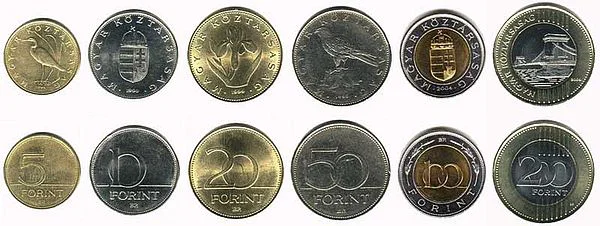FAVOURABLE EXCHANGE RATE TO THE EURO
As a tourist and guest in Hungary, you can still use the forint to make cheap purchases.
The currency still used in Hungary today is the forint. Although Hungary has tried to join the eurozone before, its efforts were initially cancelled in 2008, mainly due to the high national deficit and high inflation. It is not yet clear when and whether a further attempt to join will be made.
The exchange rate of the forint to the euro fluctuates greatly and is currently very favourable to purchase. The current exchange rate (April 2025) is just under 408:1 (1 euro = 408 forints).
It also peaked at over 415:1 in 2025, making it very interesting for tourists - but pretty bad for Hungarians themselves. Hungarian borrowers are currently suffering above all from the very poor exchange rate against the Swiss franc. In recent years, many private households have tried to avoid the poor relationship with the euro by using the franc. However, the historic highs of the franc are now causing huge interest charges for these people.
Hungarian Forint coins
Today, there are still forint coins of 5, 10, 20, 50, 100 and, since the beginning of 2009, 200 forints. The 1 and 2 forint coins, on the other hand, were abolished at the beginning of 2009 and are no longer officially in circulation. When shopping in Hungary, this means that the final price at the checkout is rounded up or down to the full 5 forints. A purchase of 4,997 forints, for example, is rounded down to 4,995, while a price of 4,998 forints is rounded up to 5,000.

Hungarian forint banknotes
Forint banknotes exist in the sizes 500, 1,000, 2,000, 5,000, 10,000 and 20,000 forints. The green 200 forint notes have no longer been a valid means of payment since the end of 2009. They have been officially replaced by the new 200 forint coins.
The blue 1,000 forint note is most commonly used in everyday life, even though it is ‘only’ equivalent to around 4 euros. When making change, you should be careful not to get an ‘old 1,000 without the silver security strip’. Although these are still officially valid (i.e. not counterfeit money), they are often rejected by shops as they can only be deposited at central banks.
Note: The forint notes have been successively reissued in recent years. The old notes are generally no longer accepted by retailers, but can still be exchanged at banks or the central bank. An overview of the validity can be found on Wikipedia, for example.
All information without guarantee of topicality and completeness.



